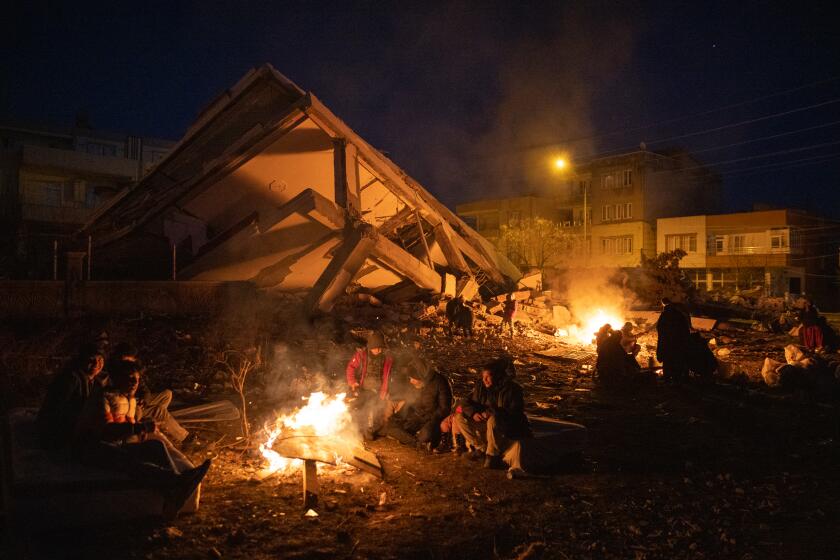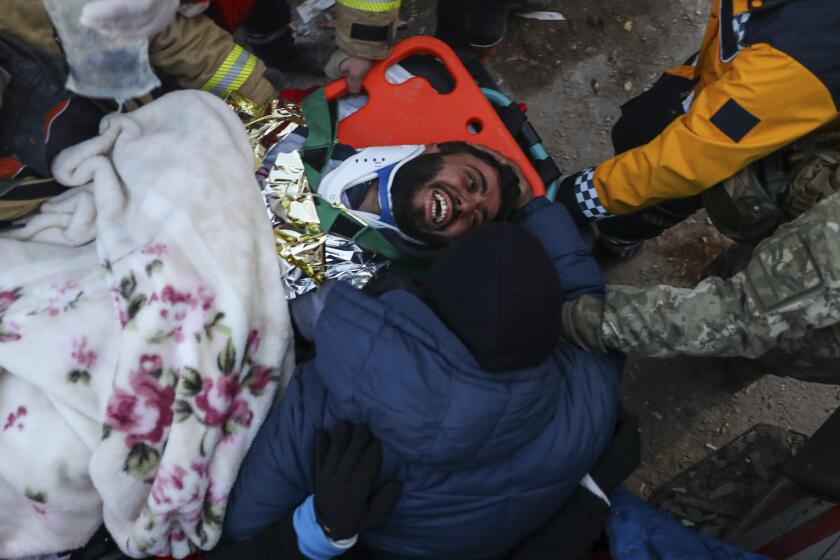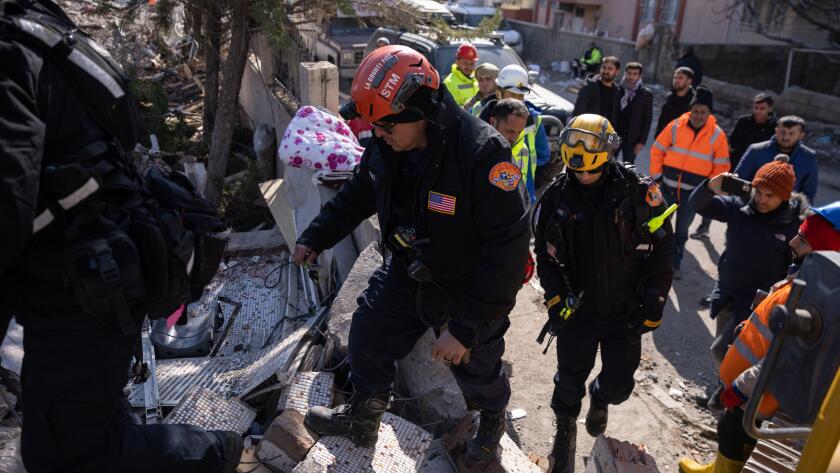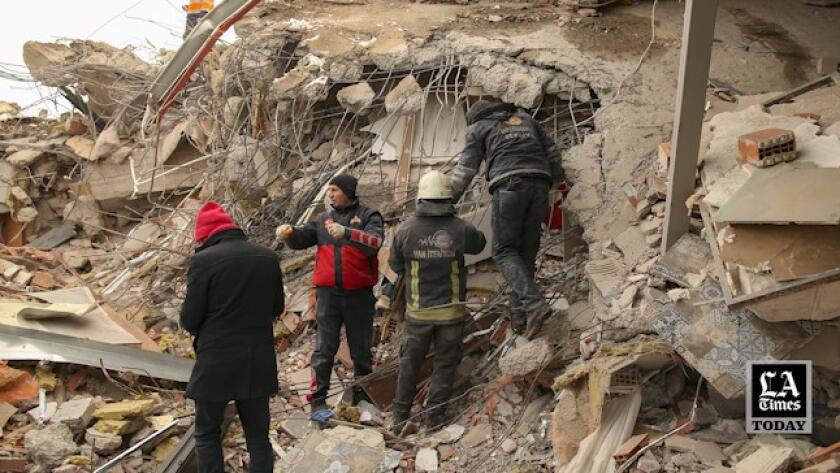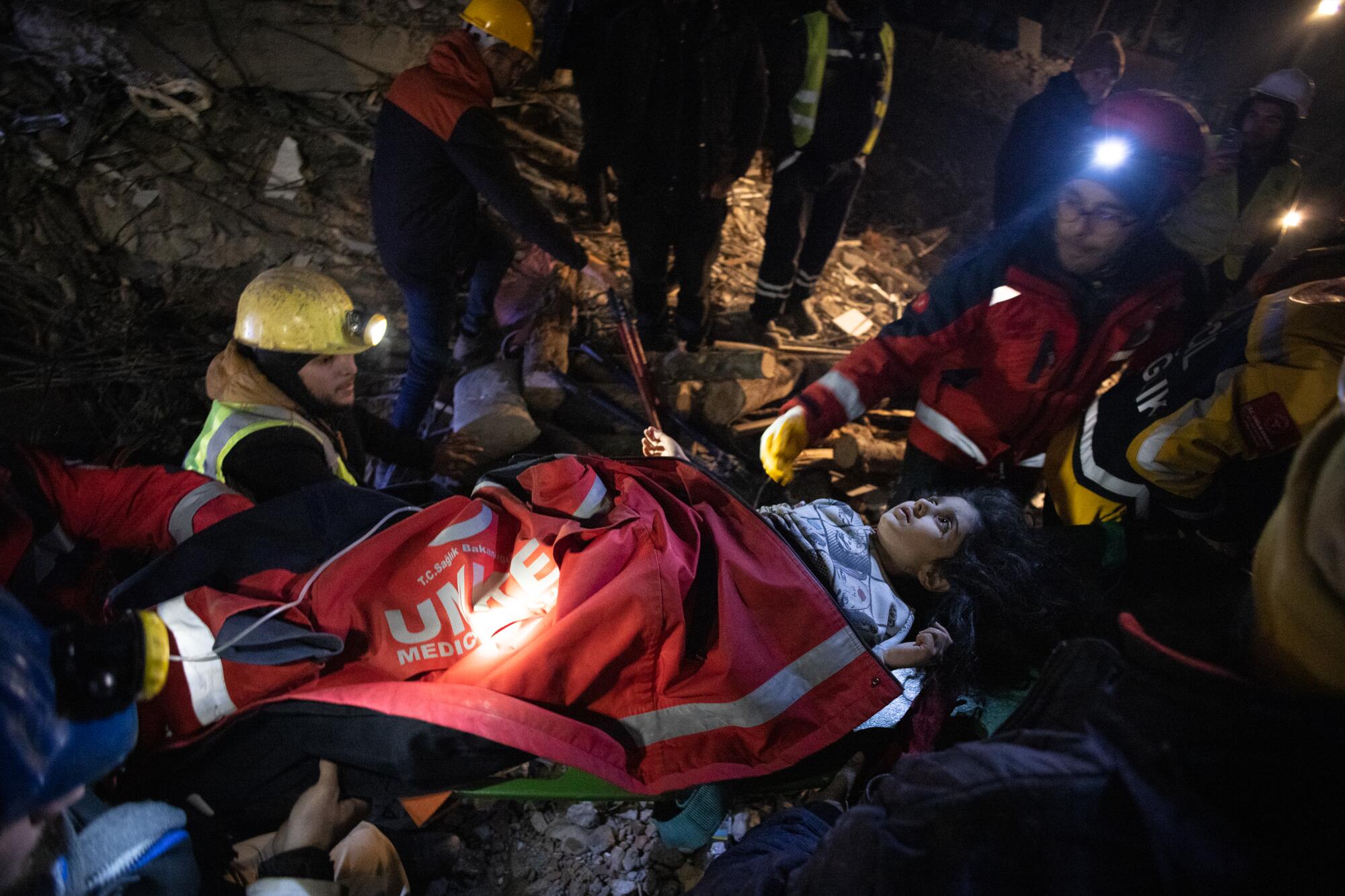
- Share via
ADIYAMAN, Turkey — It was early Sunday evening in California, and Joshua Svensson was driving home with his family from Mammoth when an app on his phone began to ping: A magnitude 7.8 earthquake had jolted southern Turkey and northern Syria, pulverizing tens of thousands of homes and killing thousands of people in them.
“At that point, you get that sinking feeling in your stomach, and it scares you,” he said. “Because when you see things on social media, you think, I’m going to probably be there in a couple of days.”
He was right.
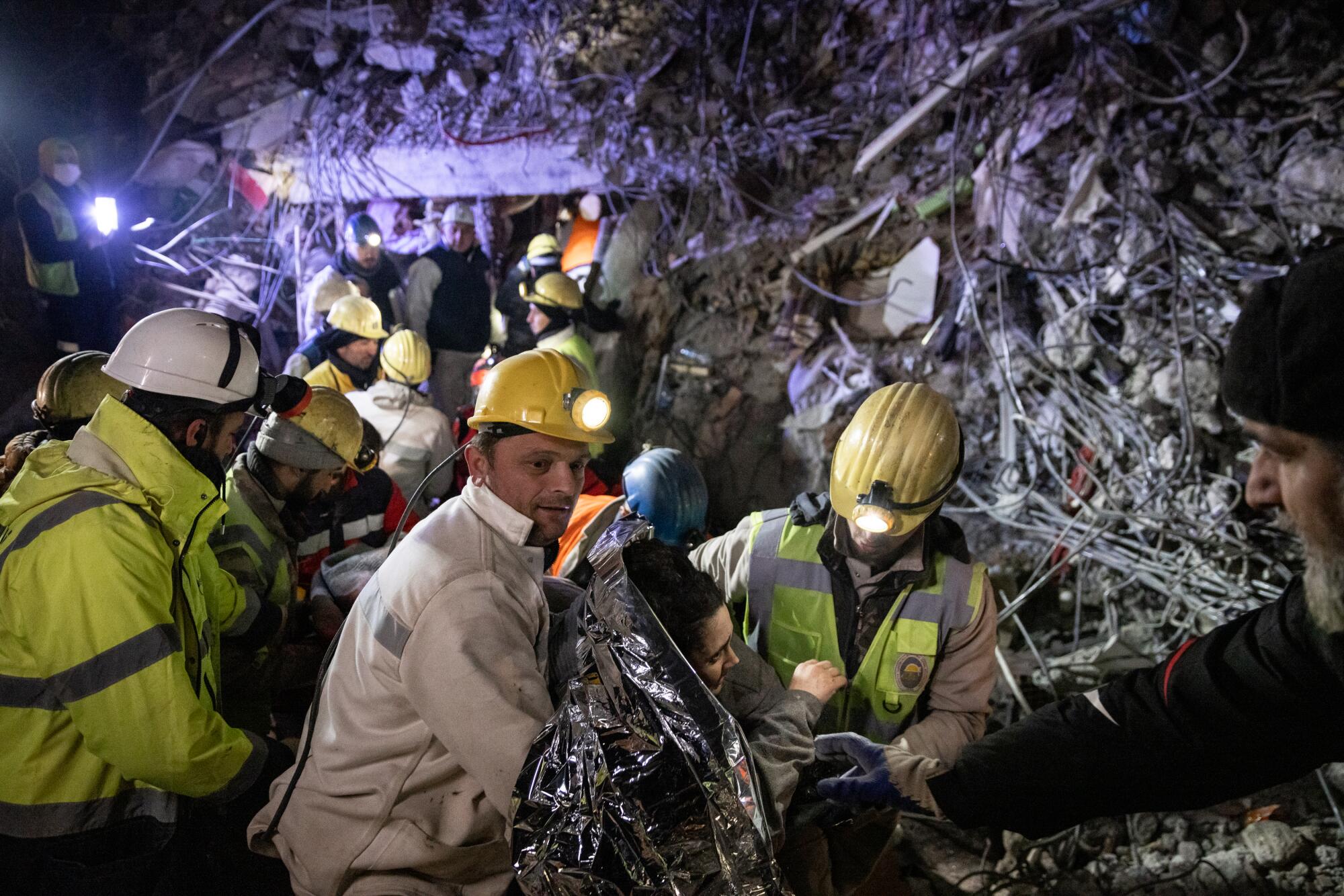
Svensson, 43, a civil engineer with the Los Angeles County Department of Public Works, doubles as a structures specialist with the county Fire Department’s Urban Search and Rescue team.
By Wednesday morning, the L.A. team, under the aegis of the U.S. Agency for International Development, known as USAID, had arrived in Adiyaman, Turkey, a hard-hit city some 60 miles northeast of the earthquake’s epicenter.
The call went out to Los Angeles County Fire Department Urban Search and Rescue members to see who could deploy after the massive earthquake in Turkey.
Since their deployment, the crew members have engaged in a dozen searches a day and undertaken hours-long tunneling efforts at buildings where they detected strong signs of life. They have consulted with local personnel on rescue attempts, in one case providing an assist with a rescue. They have also surveyed some 2,000 buildings to determine their suitability for habitation.
But first they had to get here.
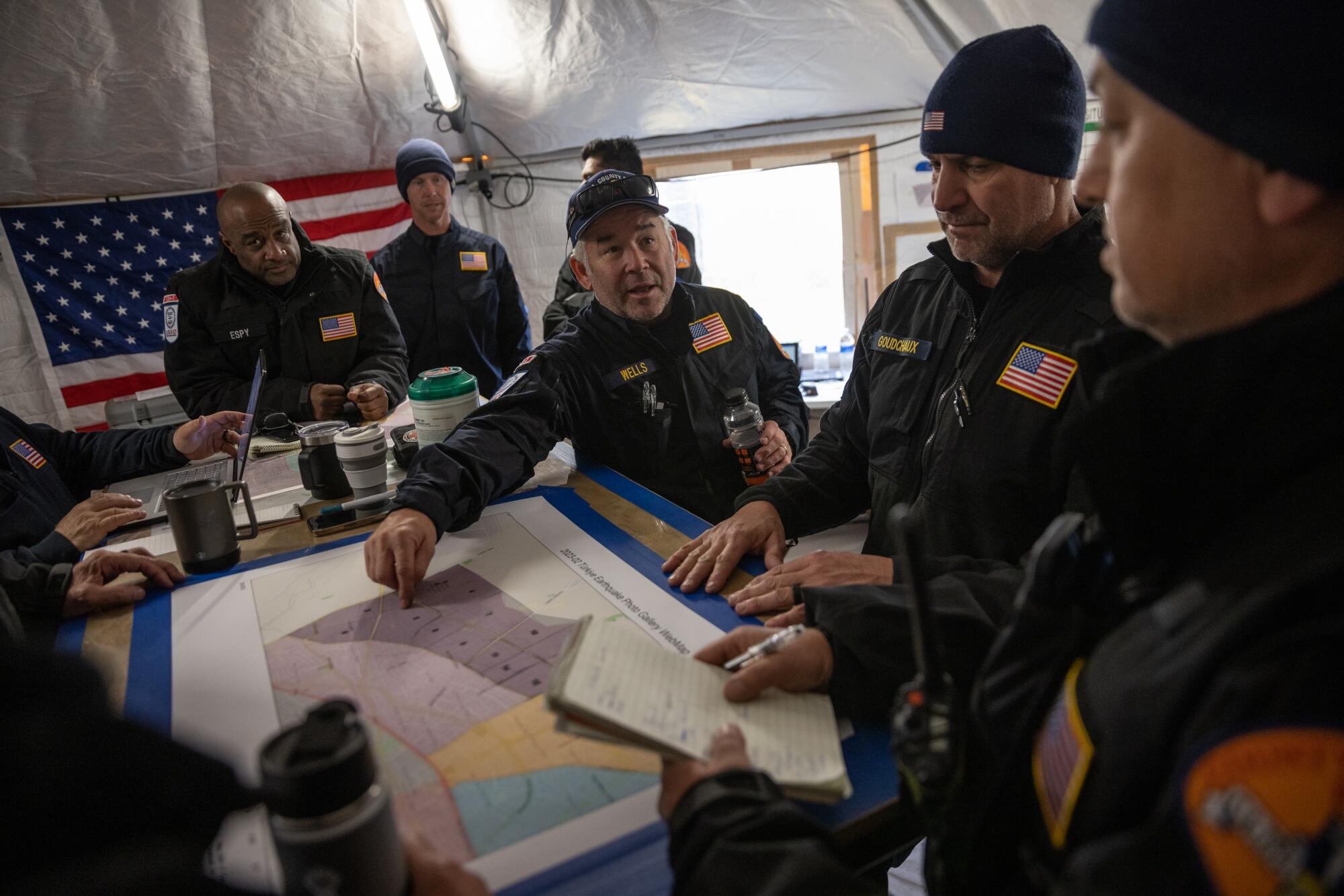
At 9 p.m. last Sunday, the call went out to see who was available for immediate deployment; once the sun came up Monday, Svensson and 76 others — firefighters, structural engineers, emergency management planners, paramedics, doctors, technical experts and six K9 dogs — assembled at the Urban Search and Rescue headquarters in Pacoima.
Just before midnight, they were wheels-up, winging — along with 65,000 pounds of equipment — to Turkey as part of a sprawling 141,000-strong search-and-rescue effort that includes 8,619 workers from 68 countries, even as estimates of the dead Saturday climbed past the 28,000 mark, with potentially thousands more unaccounted for.
Five family members were among those rescued Saturday, five days after a major earthquake struck Turkey and Syria.
Such teams, along with masses of local volunteers, medical professionals, rescue personnel and miners have become a ubiquitous presence on streets across Turkey’s ravaged southern provinces, working 24-hour shifts to locate and extricate survivors or carry out the dead.
“It’s one of those things where you train so long to do this job, and then you’re given the opportunity to go do it. It’s almost a culmination of all your efforts,” said the team’s task force leader, Bryan Wells, 52, a firefighter for more than three decades. “Then you get people who are deeply entombed in concrete. And it’s a matter of utilizing our skills.”
- Share via
Whether they’re a medical specialist, a hazmat expert or a whiz at rescues, their skills are being tested in Adiyaman.
Buildings here are a smorgasbord of urban destruction. Multistory apartment blocks have been squashed into pancake stacks of concrete; others were ground down to irregular mounds of rock detritus and distressed rebar. Still others stand dangerously askew, with bottom floors pulverized while the rest of the structure appears liable to tip over at any moment.
All force rescuers to participate in a life-size, lethal game of Jenga as they burrow into the unstable structures, where any mistake could mean catastrophe for not just anyone still alive inside but those around as well.
Only two teams in the United States qualify for missions as international disaster assistance response teams under the USAID program, and both have come together to Turkey: the one from L.A. County and one from Fairfax, Va.
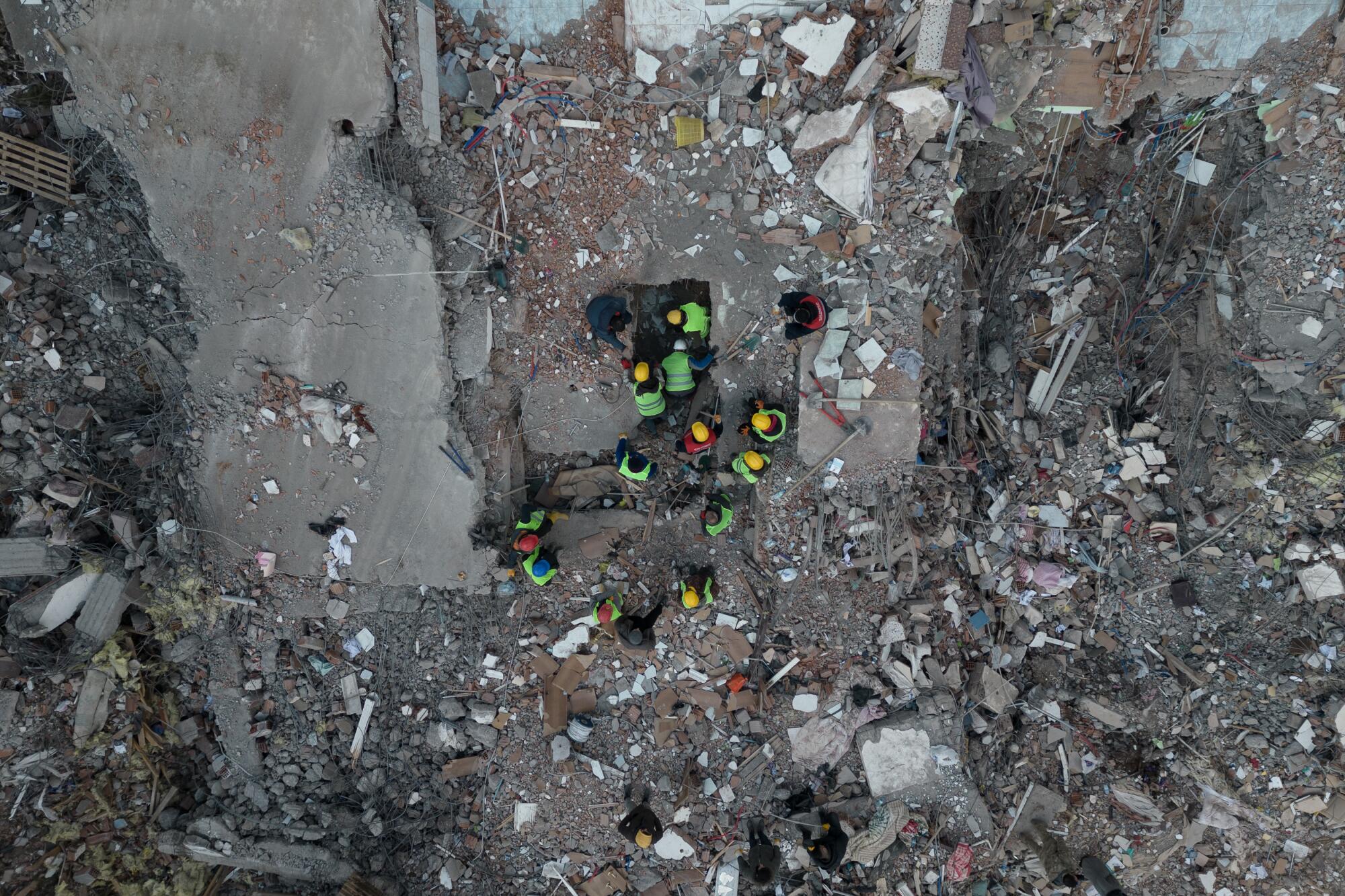
On Friday, a squad from the L.A. team maneuvered through neighborhoods of Adiyaman to assess the horrific damage. Less dramatic than rescues, yes, but no less crucial: Thousands of residents remain on the street in tents, contending with freezing temperatures yet afraid to risk moving back inside the buildings that remain standing.
“It’s a major psychological challenge,” Svensson said. “It’s a heavy responsibility, but we will go to these houses and say, ‘I would sleep here.’ Offering people that peace of mind is a big deal.”
Working with local authorities, the team helped divvy up the city blocks into manageable chunks to determine how livable the structures were. That information would be filtered back using smartphone apps tied to a central database.
Other rescue personnel across Turkey feed into the database as well, said Brad Weisshaupt, the team’s technical information specialist and a self-described data nerd.
“Essentially, this creates a common operating picture,” he said. “This is a snapshot of everything that’s going on in the entire country, search-and-rescue wise.”

As it drove around the city, the L.A. team received calls from rubble sites where crews suspected that someone remained alive.
One such request came in the early afternoon.
Jason Vasquez, a burly, 48-year-old fireman and search team manager whose glasses made him look like Rod Steiger (“More like Kim Jong Un,” his colleagues joked), led the squad to what had been an apartment building but was now a chaotic maw of pancaked floors and detritus.
The smell of human remains was pungent, but workers believed they had heard something through one of the openings.
Vasquez was accompanied by Sean Quigley, a canine specialist, and Gino, a black Labrador. Behind them was Matt Arledge. They would survey the site for signs of life while Carlos Slythe, a structures specialist, would monitor closely to make sure they weren’t in danger.
Quigley released Gino from his leash, commanding him to walk atop the structure. The dog trotted to one opening, then another, where one could see the remains of a human body whose back had been broken by the collapsing floors. The mission was rescue and not cadaver recovery, though, and Gino couldn’t detect anyone who was alive, so Quigley called him off.
Arledge was up next. Vasquez, clearly worried about the state of the structure, said, “You have 30 seconds.”
Arledge unspooled a long wire with a rugged, hyper-sensitive microphone at its end and donned a pair of headphones.
“If you did this,” he said, tapping his finger very lightly on a nearby rock, “I would be able to hear it.”
He moved toward the opening, fed the microphone in and put on headphones. Slythe kept constant watch. After several attempts, Arledge shook his head. Nothing.
Vasquez thanked the foreman at the site for his work and told him they had detected no sign of life, but the crew should operate carefully.
A young onlooker named Bilal walked up to ask if they had heard anything. He pointed to an older man with a tired, stress-lined face.
“My uncle. His two children were inside,” he said in halting English. When he was told they had heard nothing, his eyes moistened for a moment, then he blinked, thanked the team and turned back to the site with his uncle.
“A lot of it is ghost stories at this point,” said Vasquez. “Often people just want closure.
“I’d do the same,” he added.
By the time darkness fell, the squads had surveyed no fewer than 1,500 buildings and went back to base.
Just a few hours later, though, came a call to a six-story building with potentially dozens of people inside.
A group of miners working on the collapsed structure thought they had heard something and discovered 33-year-old Ozlem Yilmaz and her two daughters, Zeynep, 11, and 6-year-old Zeliha, wedged — virtually squashed — between two floors. Zeynep had died, but Yilmaz and Zeliha were responding; Turkish personnel were taking the lead but wanted technical and medical support from the American teams.
For hours, the crews worked in 29-degree weather, carefully removing debris while shoring up the passageway with logs. At one point, the Turkish miners asked for jacks they could use to further prop up the structure.
Then, Dr. Brad Haywood, a paramedic with the team from Virginia, administered a solution of electrolytes to help stabilize Yilmaz. She was rescued soon after and rushed to an ambulance. She started crying when she was told she had been inside for five days.
That left Zeliha, who was blocked by her sibling’s lifeless body. An hour passed, as dozens of onlookers sat arrayed around the opening as if in an amphitheater.
Finally, early Saturday, a miner emerged with the girl on a stretcher, her black hair streaked with dust, her eyes blinking in the floodlights. The crowd seemed to collectively exhale, then followed as the medics carried her to an ambulance.
When the ambulance drove away, it was high-fives and smiles among the various crews. Dogan Can, the lead Turkish paramedic, shook hands with Haywood.
The crews trudged away from the site as a food truck arrived and dispersed steaming-hot lentil soup and bread to the crowd that lingered behind, still basking in the afterglow of a brief moment of joy in a city all but bereft of it.
- Share via
Watch L.A. Times Today at 7 p.m. on Spectrum News 1 on Channel 1 or live stream on the Spectrum News App. Palos Verdes Peninsula and Orange County viewers can watch on Cox Systems on channel 99.
More to Read
Sign up for Essential California
The most important California stories and recommendations in your inbox every morning.
You may occasionally receive promotional content from the Los Angeles Times.
